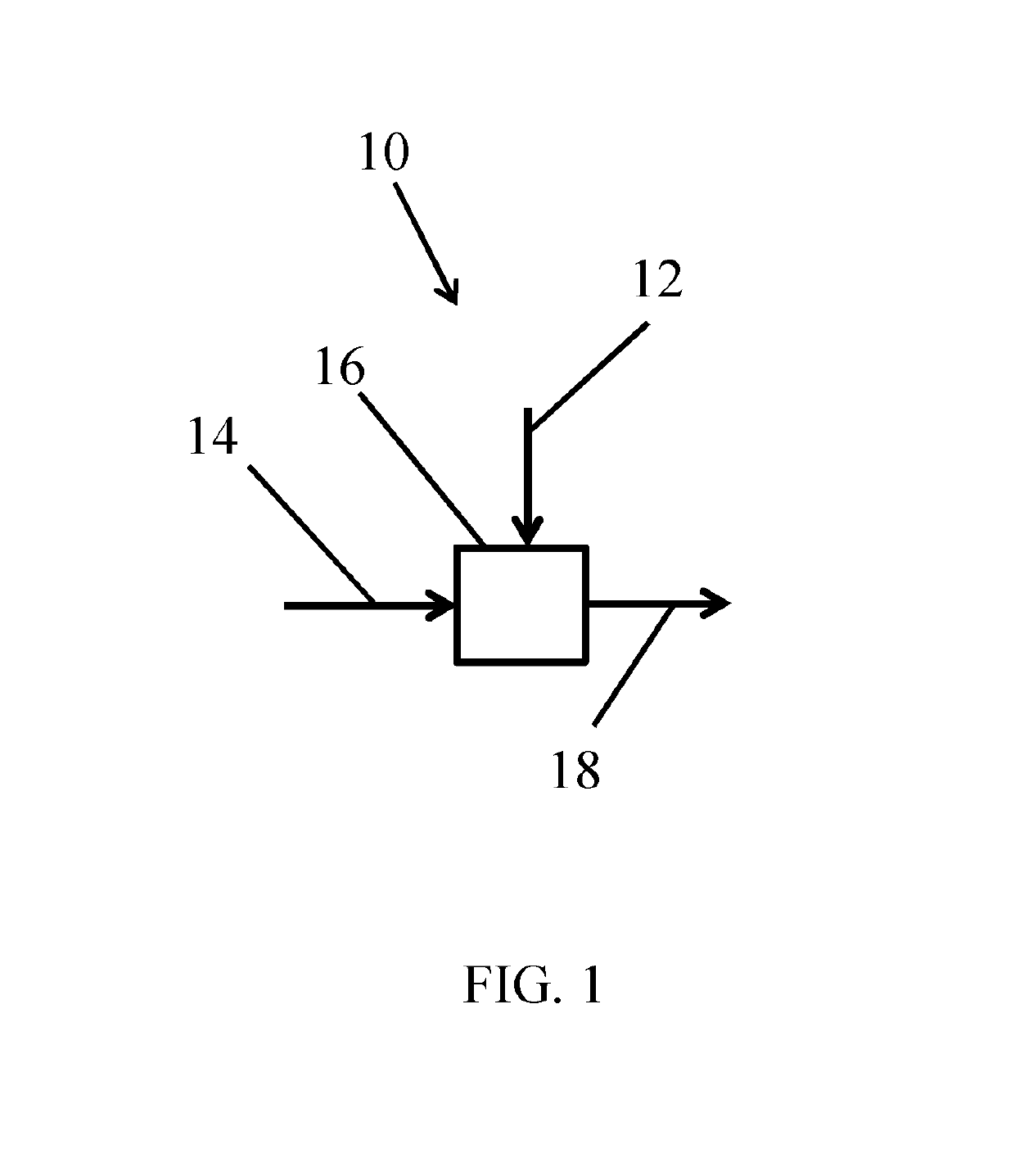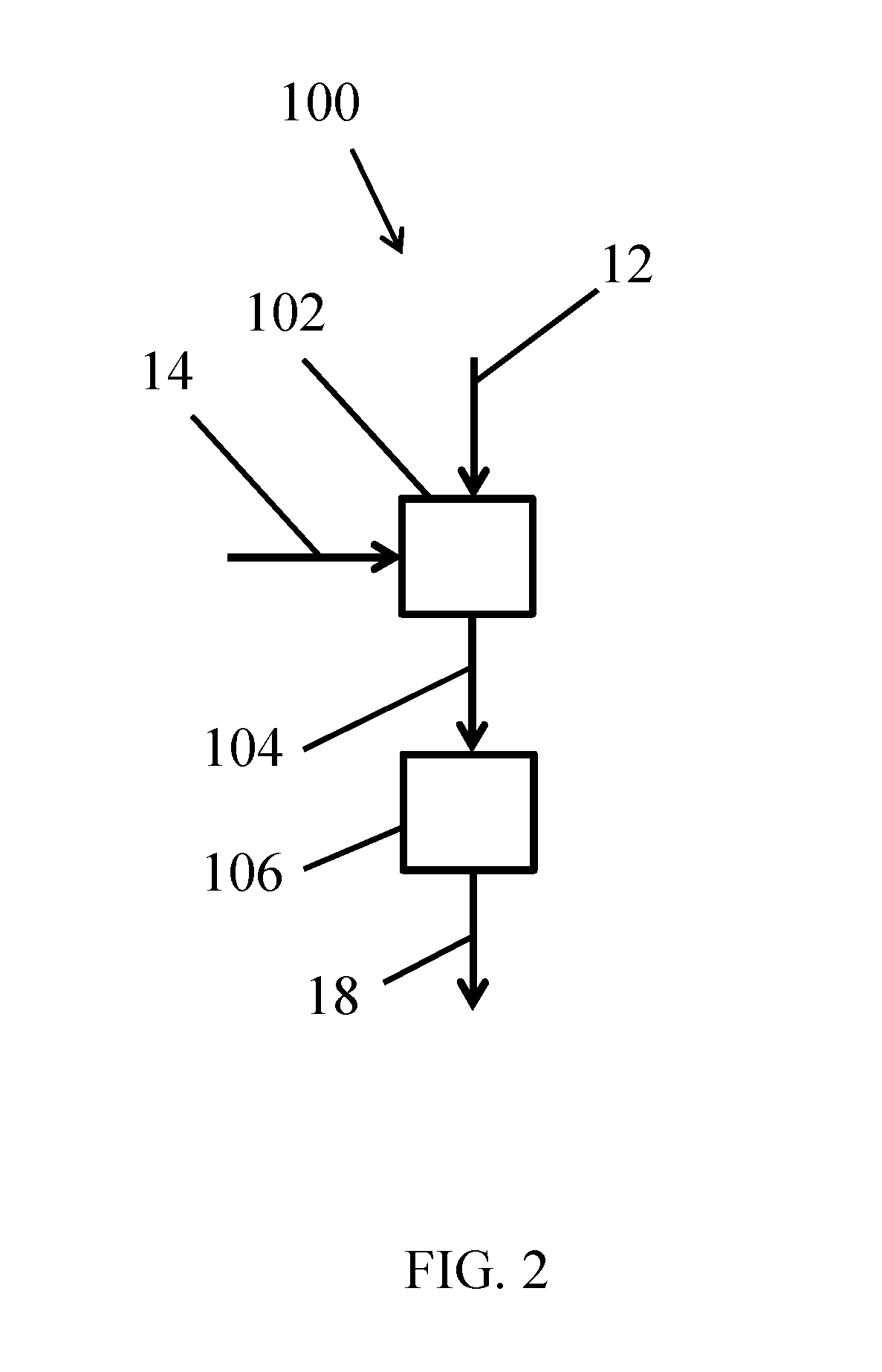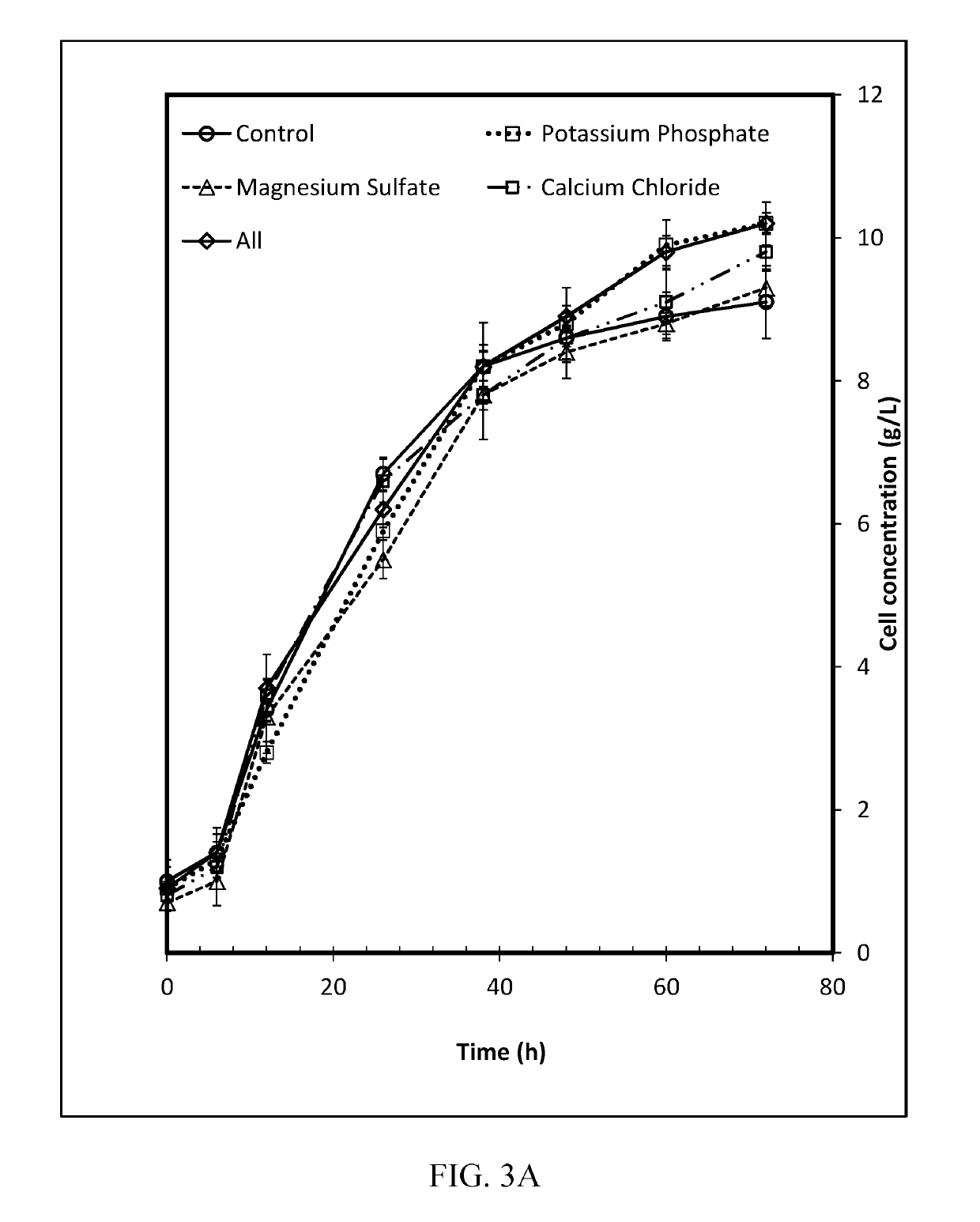Production of arabitol
a technology of arabitol and production method, applied in the direction of fermentation, etc., can solve the problems of process lack of productivity necessary for widespread industrial production of arabitol, and achieve the effect of increasing the production of arabitol
- Summary
- Abstract
- Description
- Claims
- Application Information
AI Technical Summary
Benefits of technology
Problems solved by technology
Method used
Image
Examples
example 1
dium
[0146]The initial total sugar concentration was 41.9±2.7 g / L. After 3 days, 10.8±0.8 g / L arabitol was produced, cell concentration reached 11.2±0.6 g / L, and 3.5±0.4 g / L sugars remained. Consumption profiles of individual sugars was determined; SFH consisted of 5 main sugars: glucose, fructose and galactose were 3 major hexoses and xylose and arabinose were 2 minor pentoses. Catabolite repression was seen; the yeast consumed the hexoses with a clear order of preference: glucose>fructose>galactose. Hexoses were completely depleted. Consumption of the two pentoses was not evident in this system; their concentrations remained essentially constant
example 2
upplementation
[0147]Though SFH alone was found to support cell growth and arabitol production by D. hansenii, it was also determined if supplementation of certain minerals would improve rates and / or yields. Results obtained with or without addition of MgSO4.7H2O (1 g / L), K2HPO4 (2.4 g / L) and CaCl2.2H2O (0.5 g / L), individually or together, to SFH are shown in FIG. 3A and FIG. 3B. Calcium chloride and magnesium sulfate supplementations were found not to significantly affect the final cell (p=0.34) and arabitol concentrations (p=0.19) achieved. However, addition of potassium phosphate improved the final arabitol and cell concentrations. Maximum cell concentration in presence of potassium phosphate was 10.2±0.4 g / L, compared to 9.2±0.3 g / L in the negative control of no mineral supplements (p<0.02). The effect seemed to be even stronger on arabitol production than on cell growth. Final arabitol concentration was increased from 11±0.6 g / L to 14.1±0.4 g / L with the addition of potassium pho...
example 3
[0148]5 media were prepared as shown in Table 1.
[0149]
TABLE 1Varied compositions of media used in shake flask study for effect of C / N ratio.Total Total SFH sugarcarbonorganic NC / NMedium(g / L)(g / L)(g / L)ratio126.810.720.4523.8249.919.960.6033.3376.730.860.6051.4494.537.800.6063.0576.830.720.9034.1
[0150]The C / N ratio was varied from 23.8 to 63.0. The nitrogen source was only from SFH while the carbon source was from SFH and additional sugars. Cell and arabitol concentration profiles obtained in these systems are shown in FIGS. 4A and 4B, respectively. The initial total sugar concentrations, concentrations of consumed sugars at the end of the runtimes (120 h), and the corresponding yields of arabitol from the consumed sugars are further compared in FIG. 4C to show the effects of different C / N ratios. Maximum cell concentrations were found to correlate with the nitrogen source concentrations. Highest cell concentration of 11.3 g / L was achieved with the highest N concentration of 0.9 g / L i...
PUM
| Property | Measurement | Unit |
|---|---|---|
| concentration | aaaaa | aaaaa |
| concentration | aaaaa | aaaaa |
| concentration | aaaaa | aaaaa |
Abstract
Description
Claims
Application Information
 Login to View More
Login to View More - R&D
- Intellectual Property
- Life Sciences
- Materials
- Tech Scout
- Unparalleled Data Quality
- Higher Quality Content
- 60% Fewer Hallucinations
Browse by: Latest US Patents, China's latest patents, Technical Efficacy Thesaurus, Application Domain, Technology Topic, Popular Technical Reports.
© 2025 PatSnap. All rights reserved.Legal|Privacy policy|Modern Slavery Act Transparency Statement|Sitemap|About US| Contact US: help@patsnap.com



